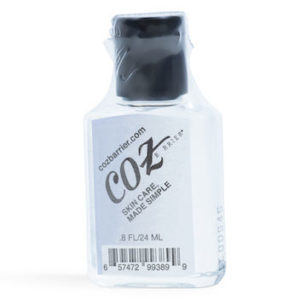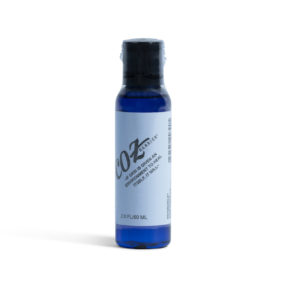The end of 2013 when I knew radiation was in my future I became concerned about my thin skin health. The sun and I are not friends as my dermatologist would confirm so I knew my skin would take a hit.
I had huge support from various medical professionals due to my work with a Gynecologist/Oncologist. I have supplied therapeutic dilators to the cancer hospital for about 18 years.
Thinking about what might be a better solution for me, other than the creams the hospital was generously handing out, I brought the cream tubes to my office and researched the various ingredients. Both were water based and one had a desensitizer added for pain control.
I’ve learned some cancer hospitals offer various creams during treatments, some offer a list of suggested products, and some have small stores in the hospital to purchase various options. I came to the conclusion there is NO one product across the board the majority of medical institutions recommend.
Women have created a multitude of blogs about their skin health during their radiation journey. Some seek out advice from friends and some just buck it up and suffer through. Creating COZ Barrier® I was focused on skin damage, body image, the heat produced, dry skin itch, wearing a bra, or material touching the area.
I began experimenting with dimethicone formulas because I knew they would NOT be absorbed. Dimethicone resides on top of the cells as a barrier. It does not attach to the skin cell allowing the skin to breathe. It is the ability of the skin to breathe that allows the skin to heal itself. Most oils attach to the skin cell cutting off the oxygen needed for natural healing.
COZ Barrier® sedates inflammation with various degrees of burns. During radiation treatment the heat becomes internal but COZ Barrier® soothes the external area. Storing your bottle in the refrigerator can offer a cooling application.
COZ Barrier® simply gives the skin an environment to heal itself.
Safety
- Synthetic ingredients often have a bad reputation in the skincare world as they are considered not natural. This is a bit of a misunderstanding; artificial ingredients are usually safer than their plant or animal-derived counterparts as they contain fewer impurities. They are also better for the environment as they don’t need to be sourced from a natural resource. (Thedermreview.com)
- Cyclopentasiloxane is considered a safe ingredient for its uses in skincare and cosmetics. The Cosmetic Ingredient Review Expert Panel, a US organization that determines the safety of cosmetic and skincare ingredients, concluded in 1991 that compounds containing cyclopentasiloxane safe for use. Further reviews conducted in 2005 supported its use.
- Critics say that dimethicone can be toxic to the human body because of the risk that the silicon molecules used to create it might be absorbed through the skin. According to Silicone Solutions, however, silicones are designed specifically to be inert and nontoxic. Their molecules are also generally too large to be absorbed into the skin, so they rarely, if ever, enter the body. (Sciencing.com)
- Safety Assessment of Dimethicone Crosspolymers as Used in Cosmetics
- Board-certified dermatologist Dr. Julie Jackson states that dimethicone “doesn’t interact with the stratum corneum (the top layer of the skin). It forms a film that prevents the loss of water through the skin to help keep skin moisturized. As an emollient, it also fills the spaces between cracks in the skin.”

Research
- The Use of Silicone Adhesives for Scar Reduction
- Silicone gel sheeting (SGS) has been used in scar therapy for over 30 years, during which its efficacy has been the subject of numerous clinical evaluations. While the exact mechanisms by which SGS improves hypertrophic scars, keloid development and recovery are yet to be fully agreed upon, its ability to do so remains largely undisputed. As such, topical silicone gel treatments seem to remain the first point of clinical recommendation in scar management. This article aims to review a breadth of literature to gain an insight not only into how, but also why topical silicone gels remain the favored treatment of medical experts in scar management. We also analyze an ever increasing number of alternative therapies claiming to provide enhanced scar reduction performance as a comparison.
- Silicone gel for skin healing
- “Silicone gels have been used for many years to improve the appearance of hypertrophic, traumatic and surgical scars, but have only in recent years been used in post-laser treatment care,” says Lindsey Yeh, M.D., American Board of Dermatology board-certified dermatologist, Refined Dermatology, Los Gatos, Calif.
- Radiation-Induced Skin Injury: A Challenging Issue in the Outpatient Wound Clinic
- The skin treated with the silicone film had a 92% reduction in overall severity of skin reaction compared to the cream, and had no moist desquamation compared to 26% of the skin treated with the aqueous cream.
- The effects of conservative treatments on burn scars: A systematic review
- Pressure and silicone therapy are evidence-based conservative treatments of hypertrophic scar formation after a burn producing clinically relevant improvement of scar thickness, redness and pliability.
- Effects of silicone gel on burn scars
- Silicone gel is an effective treatment for hypertrophic burn scars.
- The role of medical grade silicones in surgery and its topical applications
- Medical grade silicones now have close to a 55 year history of good performance in the operating room as a source of reliable material that is well tolerated for both reconstructive and cosmetic applications. Silicones have also produced a similar record in many forms of postoperative topical skin care especially in patients with traumatic wounds and burns. Topical silicones have also become an integral part of the postoperative therapy for scar modification.
-
 COZ Barrier® 0.8 oz$34.00
COZ Barrier® 0.8 oz$34.00 -
 COZ Barrier® 2 oz$40.00
COZ Barrier® 2 oz$40.00 -
 COZ Barrier® 4 oz$70.00
COZ Barrier® 4 oz$70.00
